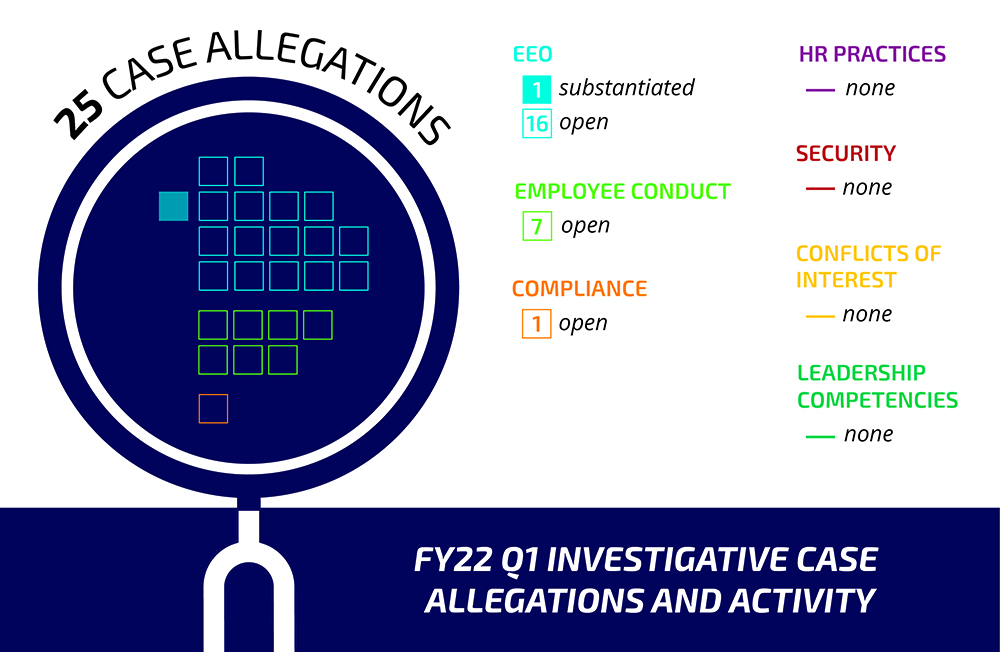
Sandia partners, colleagues, stakeholders and the nation depend on the integrity of Labs research and development. Research misconduct can have a devastating impact, both internally and externally.
This month, Ethics/Equal Employment Opportunity Advisory and Investigative Services partners with the Office of Research and Development Excellence to highlight the importance of recognizing and reporting R&D misconduct.
Recognizing R&D misconduct
R&D misconduct is fabrication, falsification, or plagiarism in proposing, performing or reviewing research, or in reporting research results. This does not include honest errors or differences of opinion. Three conditions must be met to identify R&D misconduct: a conclusion that there has been a significant departure from accepted practices of the relevant research community, evidence that the departure was knowingly, intentionally or recklessly committed and a determination based on the majority of the evidence that misconduct has occurred.
How to report suspected R&D misconduct
If a staff member is unsure whether a suspected incident meets the criteria of R&D misconduct, they should contact the Office of Research and Development Excellence to discuss the suspected misconduct informally.
Employees have a responsibility to report suspected R&D misconduct to the Office of Research and Development Excellence at 505-844-8400, or Ethics/Equal Employment Opportunity Advisory and Investigative Services at 505-845-9900 or ethicsteam@sandia.gov. If a staff member believes that there is a conflict of interest that cannot be resolved internally at Sandia, they may contact the DOE Scientific Integrity Official in the DOE Office of the Deputy Secretary. Retaliation against an employee who reports possible R&D misconduct is prohibited.
Reporting tips
When reporting suspected R&D misconduct, it is important to provide as much detail surrounding the misconduct as possible, such as:
- Who allegedly committed the R&D misconduct, including the person’s name, organization and position?
- What is the R&D misconduct that occurred, such as falsifying or fabricating test results or plagiarizing an article?
- When did the R&D misconduct occur? What was the date, time and how frequently?
- Where did the R&D misconduct occur, such as in a research report or article?
- Why does the person believe the R&D misconduct occurred? Was the researcher under time pressure, was there not enough supporting data or other reason?
After a report is made, an initial inquiry determines whether a Research Integrity Officer and Ethics Officer will perform an investigation. These officers are neutral and guided by fairness and objectivity. The time frame for conducting an inquiry varies based on the complexity of the issue, evidence provided and need for engaging subject matter experts. Once the inquiry is complete, the Research Integrity Officer and the Ethics Officer will determine if there is enough evidence of misconduct to pursue an investigation. Investigation follows the process outlined in RD001, Research and Development Integrity Policy.
Ethics accomplishments
In the first quarter of fiscal year 2022, from October to December, the Ethics/Equal Employment Opportunity office received 180 calls on its anonymous helpline. Most of those calls were resolved informally by Ethics officers providing guidance to callers or conducting a brief inquiry into complaints to determine if a policy or code violation occurred.
During this time, Ethics officers opened 15 investigations into 25 allegations. Investigations sometimes include more than one allegation, and decisions are reached on each allegation investigated. See the graphic below for the outcome of the 25 allegations investigated. Corrective actions were taken for all substantiated allegations.
